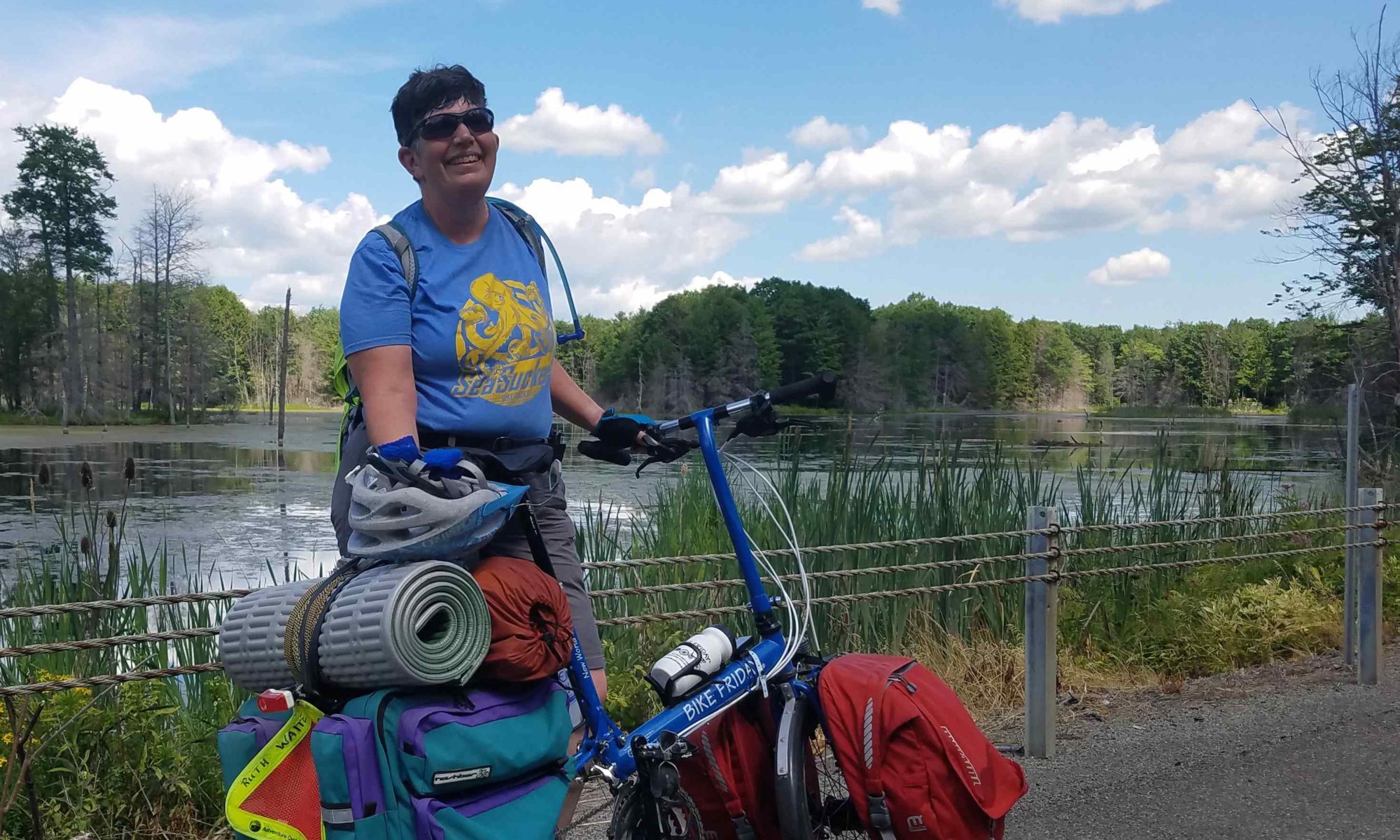July 26.
This day was one of the highlights of the trip for me. Though I was worried about traveling through the South in the summer heat–which has, indeed, been difficult–it’s been amazing to learn some history from people who were actually there. We started out our day by talking about our impressions from watching the movie Selma the night before. David, the only black person traveling with us, said that he had only met a handful of actual out and out racists in his life. Others were simply afraid. David is from Atlanta.
But we had to get there before our history lesson, so here are some photos along the way:






This was one of the days when the sweat ran into my socks and got them just as wet as rain. Also, my fingers were turned to prunes from the sweat, also. If our route had not changed due to a bridge out, taking us by an extra gas station, I might have run out of water. I drink four to five times as much as other people but, for whatever reason, I seem to need that much.
Henry had a friend in Selma who was serving as an intern with the city. She arranged for a presentation by Diane Harris who was in high school in 1965. She told us about her experiences during the weeks surrounding Bloody Sunday.

She went to a Lutheran School there in Selma and was a freshman in high school. Students from SNCC (Student Non-violent Coordinating Committee), which I think were college students, came to her school. They made the movement sound meaningful and exciting and Diane skipped school one day to go down to the church where meetings were being held and listened to the speakers. She got her younger brother to go with her. Skipping school was a big deal, and it sounds like Diane was also quite persuasive! She said she was sure she was going to get a beating when her mom learned that she had skipped school and taken her little brother with her. But she told her mom she was doing it, at least in part, because she knew that her mother couldn’t because of her work and all. She didn’t get a beating that night and was actually allowed to skip school for four days.
On the day of the protest known as Bloody Sunday, depicted in the movie Selma, Diane and her brother had permission to go to the downtown church and listen to the speakers again that day. But they were not allowed to leave the church. This is the day depicted in the photos above. As you can see, she is not inside the church! The arguments that she had previously used with her mother were to no avail, and she did get a beating that day from her mother. Those on the Edmund Pettus Bridge, including Representative John Lewis, suffered much more severe beatings.
Diane and her brother were in the back of the crowd. That group–the numerous people whose names are not widely known–are the foot soldiers of the civil rights movement, and Diane Harris and her brother are among them. She said they never set foot on the bridge. They heard the explosions–tear gas and smoke bombs–and people screaming and running, and they ran back to the church. They just made it back to the church on time before someone on horseback reached them.
She told us how they learned later about who some of the “posse men” were–those who had been deputized by Sheriff Jim Clark and rode horses and carried batons to beat people with. One was their milkman, who delivered milk in their neighborhood. When that became known, people in the neighborhood quit getting their milk from him. It’s truly a hard thing to imagine.
She talked about how very much things have changed, but about how the struggle also continues. She led us in some of the songs that they had sung at the church to give them strength during the movement.
After the presentation, I walked to the Edmund Pettus Bridge.




The Episcopalian Church where we stayed had its own civil rights history. The current rector told us about how shame lingers on in the community and what they are doing to heal those long-term wounds.


Jonathan Myrick Daniels, a seminarian, brought some black people to the church. They were not allowed in to the worship service. The last paragraph of the sign above tells about how that forced the congregation to reevaluate their attendance policies. He was later killed in Hayneville, AL and is recognized as a martyr by the Episcopalian Church.


It was a very moving day and I am very fortunate to be on this journey.

Thank you for ALL of your updates Pastor Ruth – you and your fellow bikers are on quite a journey and I feel blessed to be able to share just a tad of what you are experiencing.
Continued prayers for safe travels and be blessed as you all share your blessings with those you meet along the way…Barbara
Thanks!
Thank you for sharing your trip. This post was one of my favorites. Miss you!